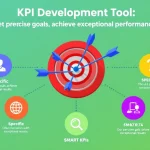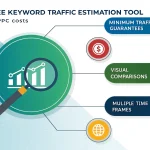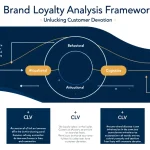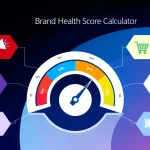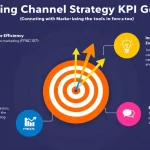Is this tool helpful?
How to Use the Brand Metrics & KPI Tracker Effectively
This tool helps you track key performance indicators that measure how well your brand strategy works. Follow these steps to use the tool and get meaningful insights:
- Brand Name Entry: Enter your brand’s name, for example, “Everest Outdoors” or “Brightline Energy”. This identifies your brand within the system for tailored tracking.
- Industry Selection: Choose the industry your business operates in, such as “Renewable Energy” or “Hospitality”. This helps customize relevant metrics for your sector.
- Key Metrics to Track: Select the important brand KPIs like Brand Awareness, Customer Loyalty, or Web Traffic that matter most to your goals. You can select multiple metrics to monitor.
- Target Audience Description: Provide a brief overview of your target market’s characteristics and demographics, e.g., “Urban professionals aged 25-40” or “College students interested in fitness and wellness”. This contextualizes your tracking data.
- Tracking Time Frame: Decide how often you want to assess your metrics—options include Monthly, Quarterly, or Annually. This frequency supports continuous improvement.
Understanding the Brand Metrics & KPI Tracker: Definition, Purpose, and Benefits
The Brand Metrics & KPI Tracker is a practical tool that enables you to monitor essential indicators showing how successful your brand strategy is over time. By measuring attributes like brand awareness, customer engagement, and market share, you gain clear insights into your brand’s position and health.
Tracking these key performance indicators empowers you to make informed decisions, optimize marketing resources, and maintain a competitive advantage in your industry. Regular use of this tracker helps you spot trends early, identify areas for improvement, and align your brand activities with business goals.
Why Tracking Brand Metrics Matters
- Monitor brand recognition and recall in your target market.
- Understand customer engagement levels across platforms.
- Assess loyalty and repeat business to improve retention.
- Measure campaign effectiveness to guide marketing strategy.
- Benchmark your brand against competitors and industry trends.
Practical Usage and Example Calculations with This JavaScript Calculator
This tool processes your inputs to generate a detailed brand metrics analysis report. Below are sample calculations you may find useful when interpreting your results.
Calculating Brand Awareness Score
The Brand Awareness Score shows the percentage of your target customers who recognize your brand.
$$ \text{Brand Awareness Score} = \frac{\text{Number of Target Customers Aware of Brand}}{\text{Total Target Market Size}} \times 100 $$Determining Engagement Rate
Engagement Rate reflects how actively your audience interacts with your brand across social media and other channels.
$$ \text{Engagement Rate} = \frac{\text{Total Engagement Actions}}{\text{Total Reach}} \times 100 $$Measuring Customer Loyalty Index
Customer Loyalty Index indicates the percentage of repeat customers, which highlights satisfaction and brand trust.
$$ \text{Customer Loyalty Index} = \frac{\text{Repeat Customers}}{\text{Total Customers}} \times 100 $$Benefits of Using the Brand Metrics & KPI Tracker
1. Make Strategic Decisions Based on Data
This tool turns raw data into actionable insights, helping you:
- Identify trends in brand performance quickly
- Understand customer behavior and preferences
- Evaluate marketing campaign impact comprehensively
- Adjust your brand strategy to boost effectiveness
2. Optimize Marketing Resources
Use accurate metric data to:
- Allocate budget to high-return marketing activities
- Focus efforts on channels driving real engagement
- Reduce waste on underperforming campaigns
3. Gain a Competitive Edge
Regular monitoring of key brand KPIs allows you to:
- Spot emerging market trends before competitors
- Benchmark your brand against industry leaders
- Identify opportunities for innovation and growth
Real-Life Use Cases for the Brand Metrics & KPI Tracker
Retail Brand Growth
A popular retail chain improved customer engagement by 20% and increased brand recall by 25% within one quarter by monitoring key metrics using this tool.
Technology Startup Expansion
A SaaS company tracked their market share growth and customer acquisition, enabling targeted campaigns that led to a 30% increase in customer base over six months.
Frequently Asked Questions About Brand Metrics Tracking
Which brand metrics are most crucial to monitor?
Focus on brand awareness, customer engagement, customer loyalty, market share, and conversion rates. Choose metrics that directly support your business goals.
How often should I analyze brand performance data?
Track operational metrics monthly to stay agile and review strategic metrics quarterly to inform long-term planning.
Can I tailor metric tracking to my specific industry?
Yes, the tool adapts metric options based on industry type, ensuring relevant insights for sectors such as healthcare, technology, finance, retail, and more.
How do I interpret the analysis report?
Compare your results against industry benchmarks and past performance. Use the insights to refine marketing strategies and improve brand positioning.
What steps should I take after receiving my metrics report?
Adjust your marketing campaigns, improve customer engagement approaches, enhance product offerings, and reallocate resources based on what the data reveals about your brand’s health.
Advanced Tips for Maximizing Your Brand Metrics Tracking
Integrate Metrics with Your Marketing Strategy
- Align brand performance indicators with campaign goals
- Map customer journeys to spot engagement opportunities
- Refine sales funnels based on conversion data
Apply Trend Analysis and Forecasting
- Use historical data to predict future brand performance
- Identify seasonal or cyclical patterns in customer behavior
- Plan proactive adjustments to stay ahead of market changes
Conduct Competitive Benchmarking
- Compare your performance with industry leaders and peers
- Identify gaps and opportunities in your market position
- Set realistic targets based on competitive analysis
Best Practices for Accurate Brand Metric Analysis
Consistent Data Collection
- Measure brand KPIs over regular, consistent intervals
- Use unified collection methods across all channels
- Ensure alignment to avoid tracking discrepancies
Clear Reporting and Documentation
- Create structured performance reports for stakeholders
- Document any changes in methodology or data sources
- Maintain records of historical trends for long-term analysis
Effective Strategic Implementation
- Set achievable performance targets based on insights
- Develop detailed action plans to address findings
- Monitor outcomes and adjust strategies as needed
Important Disclaimer
The calculations, results, and content provided by our tools are not guaranteed to be accurate, complete, or reliable. Users are responsible for verifying and interpreting the results. Our content and tools may contain errors, biases, or inconsistencies. Do not enter personal data, sensitive information, or personally identifiable information in our web forms or tools. Such data entry violates our terms of service and may result in unauthorized disclosure to third parties. We reserve the right to save inputs and outputs from our tools for the purposes of error debugging, bias identification, and performance improvement. External companies providing AI models used in our tools may also save and process data in accordance with their own policies. By using our tools, you consent to this data collection and processing. We reserve the right to limit the usage of our tools based on current usability factors.


